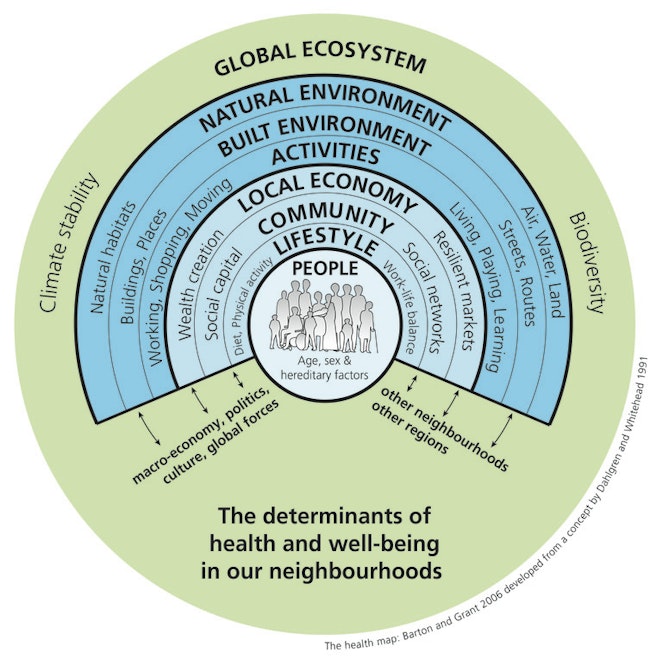How social equality is linked to health, as manifested in the built environment

Residents of the outer suburbs tend to travel much longer distances between home, work and the services they need daily. Getting around necessarily defaults to the car, which has serious long-term implications for health. Driving is particularly associated with extended sitting in a confined space and, as a result, not getting enough exercise each day. When poorer communities are located in areas of lesser amenity due to lower housing costs, this exacerbates their health problems.
The close correlation between socioeconomic status and health has long been out of question. The built environment and the environmental context serve as direct social determinants of health.
Due to lower housing costs, poorer communities are often restricted to residing in areas of lesser amenity that exacerbate the obstacles to mental and physical well-being—lack of quality services and infrastructure, scarcity of green space and long work commutes challenge health. Additionally, poor building design and construction, and the excessive noise that it causes, can significantly contribute to stress, anxiety, sleep deprivation, and sometimes even neighbor conflict and violence. What might appear as light threats, such as sleep deprivation which is linked to obesity, serve as risk factors for many chronic diseases.
While high-density living is increasingly trumpeted as “healthy,” health and well-being of poor communities in high-rise housing heavily depends on the specifics—geographic...
Anastasia Tokmakova via Archinect - News http://ift.tt/2xvfUIO
Yorumlar
Yorum Gönder